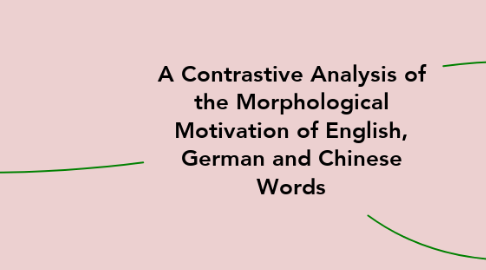A Contrastive Analysis of the Morphological Motivation of English, German and Chinese Words
by Tran Hoang My


1. Different strategies for introducing foreign items
1.1. English: adopt directly.
1.1.1. Eg: mafia /Italian/ => mafia /English/
1.1.2. Cause: in history borrowed extensively from many language
1.2. Chinese: translate
1.2.1. Eg: mafia /Italian/ => heishou dang /Chinese/
1.2.2. Cause: a markedly morphologically motivated; make out the meaning of a word through looking at the character/morphemes => loan translation
1.2.3. Loan translation
1.2.3.1. Literally translate each morpheme in a word or individual word in a phrase from the source language to its correspondence in the target language.
1.2.3.2. The morpheme or phrase borrowed: naturalized or partly naturalized
